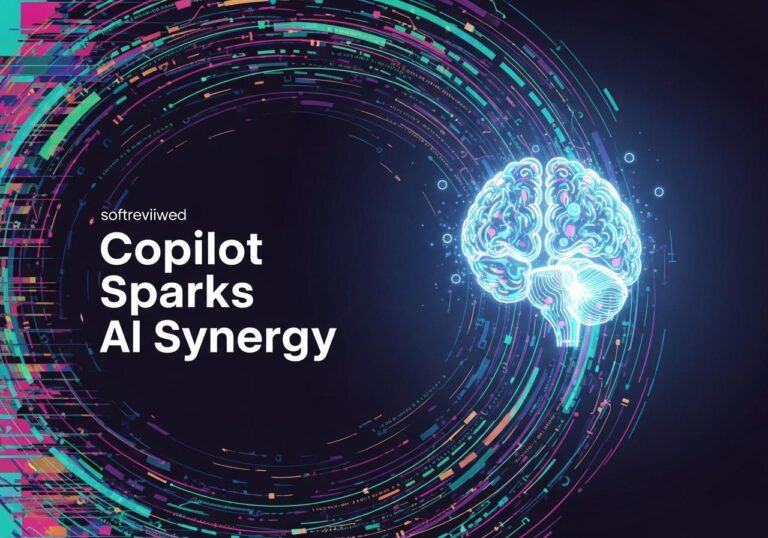🤖 Generative AI Adoption Trends 2024 🚀
Exploring the rapid growth and impact of generative AI in enterprises
📈 Dramatic Increase in Adoption
U.S. enterprises saw a jump from 11% to 65% in generative AI adoption from 2023 to 2024.
💰 Efficiency and Cost Benefits
Generative AI tools are valued for speeding up processes and reducing costs across various sectors.
🔊 Multimodal Solutions on the Rise
59% of companies are likely to adopt multimodal AI solutions in the next three years.
🔒 Data Security Concerns
Rapid adoption is accompanied by growing data security anxieties, necessitating balanced innovation policies.
As generative AI continues to evolve, businesses must navigate the balance between innovation and security to leverage its full potential.
Generative AI in Enterprise: Balancing Rapid Adoption with Security Challenges
In the fast-paced world of artificial intelligence, generative AI (genAI) has emerged as a game-changing technology for businesses across the globe. As we navigate through 2024, the rapid adoption of genAI applications in enterprises has become a double-edged sword, offering unprecedented opportunities for innovation and efficiency while simultaneously raising significant security concerns. This article explores the current landscape of genAI in enterprise settings, examining the benefits, risks, and strategies for effective implementation. The potential for genAI to revolutionize industry processes is undeniable, but it also presents new challenges for data security and privacy. As enterprise AI adoption continues to accelerate, organizations must prioritize robust cybersecurity measures and ethical AI practices to mitigate these risks. Finding the right balance between innovation and security will be crucial for businesses looking to harness the full potential of genAI in the coming years.
The Rise of Generative AI in Business
Generative AI, a subset of artificial intelligence capable of creating new content, has taken the business world by storm. From automating routine tasks to generating creative content, genAI applications have proven their worth in enhancing productivity and driving innovation. As companies continue to integrate generative AI into their workflows, the potential for more advanced artificial intelligence solutions grows exponentially. Some experts believe that the next step toward true innovation lies in an artificial general intelligence breakthrough, where AI systems will not only create content but also understand and learn across multiple domains at a human-like level. Such advancements could revolutionize entire industries, unlocking unprecedented efficiencies and capabilities.
Adoption Statistics
- 96% of businesses now use genAI applications, a remarkable increase from just a third in the previous year.
- On average, enterprises use 10 genAI apps, up from 3 in the past year.
- The top 1% of adopters utilize an impressive average of 80 genAI apps, compared to 14 last year.
These statistics, revealed in the Netskope Cloud and Threat Report, underscore the explosive growth and widespread integration of genAI across various business operations.
Benefits of Generative AI in Enterprise

The rapid adoption of genAI is not without reason. Businesses are reaping substantial benefits from this technology:
- Enhanced Productivity: Automating routine tasks allows employees to focus on high-value activities.
- Improved Decision-Making: AI-generated insights help in making data-driven decisions.
- Accelerated Innovation: GenAI tools can generate new ideas and solutions, fostering innovation.
- Cost Efficiency: Streamlining processes leads to significant cost savings.
- Personalized Customer Experiences: AI-driven personalization enhances customer satisfaction and loyalty.
Security Challenges in the GenAI Era
While the benefits are clear, the widespread use of genAI applications has introduced new security challenges that businesses must address:
Data Policy Violations
According to the Netskope Threat Labs research:
- 46% of all documented data policy violations involve sharing proprietary source code within genAI apps.
- Over a third of sensitive business information entered into generative AI apps is regulated personal data.
These findings highlight the urgent need for robust data loss prevention (DLP) measures and improved user awareness.
Risks Associated with GenAI
- Sensitive Data Exfiltration: Inadvertent sharing of confidential information through AI platforms.
- Misinformation Propagation: AI-generated content can potentially spread false or misleading information.
- Malicious Content Introduction: Bad actors may exploit AI systems to create and distribute harmful content.
- Intellectual Property Concerns: Risk of AI-generated content infringing on copyrights or patents.
- Regulatory Compliance Issues: Challenges in ensuring AI use aligns with data protection regulations.
Strategies for Secure GenAI Implementation
To harness the power of genAI while mitigating risks, enterprises must adopt a comprehensive approach to security:

1. Robust Data Loss Prevention (DLP)
Implementing strong DLP measures is crucial to prevent unauthorized data sharing and protect sensitive information.
Key DLP Strategies:
- Implement content-aware policies
- Use machine learning for anomaly detection
- Regularly update and refine DLP rules
2. User Education and Coaching
Effective user training can significantly reduce security risks:
- 57% of users alter their actions after receiving coaching alerts.
- Implement ongoing security awareness programs.
- Provide clear guidelines on the appropriate use of genAI tools.
3. Risk Management Framework
Develop a tailored risk management framework specifically for genAI:
- Utilize frameworks like the NIST AI Risk Management Framework as a starting point.
- Regularly assess and update the framework to address emerging threats.
- Involve stakeholders from various departments in the risk assessment process.
4. Data-Centric Controls
Implement controls that focus on protecting data at rest, in motion, and in use:
- Encryption for sensitive data
- Access controls and authentication mechanisms
- Data classification and tagging
5. Continuous Monitoring and Auditing
Regular monitoring helps identify and address security issues promptly:
- Implement AI-powered security monitoring tools
- Conduct regular security audits
- Establish incident response protocols
The Future of GenAI in Enterprise
As we look ahead, several trends are likely to shape the future of genAI in enterprise settings:
- Advanced DLP Solutions: Expect the development of more sophisticated, AI-driven DLP tools.
- Integrated Security Measures: GenAI applications will likely incorporate built-in security features.
- Regulatory Evolution: New regulations and guidelines specific to AI use in business are anticipated.
- AI Ethics and Governance: Increased focus on ethical AI use and robust governance frameworks.
- Collaborative AI Development: Partnerships between businesses and AI developers to create secure, industry-specific solutions.
Case Study: ASML and the AI Chip Demand
The growing demand for genAI applications has a ripple effect across industries. ASML, a key player in the semiconductor industry, reported strong earnings in Q2 2024, reflecting the rebound in demand for advanced chip-making machines essential for AI capabilities.
This case underscores the broader economic impact of AI adoption and the increasing investment in AI infrastructure.
Expert Insights
“Securing genAI needs further investment and greater attention as its use permeates through enterprises with no signs that it will slow down.” – Chief Information Security Officer, Netskope
This statement highlights the ongoing challenge of balancing rapid AI adoption with robust security measures.
Conclusion: Navigating the GenAI Landscape
As generative AI continues to transform the business landscape, enterprises face the dual challenge of maximizing its benefits while mitigating associated risks. Success in this new era will depend on:
- Implementing comprehensive security measures
- Fostering a culture of responsible AI use
- Staying agile and adaptive to emerging trends and threats
- Investing in ongoing education and skill development
By taking a proactive, security-first approach to genAI adoption, businesses can position themselves to thrive in an AI-driven future while safeguarding their valuable assets and data.
Call to Action
As the genAI landscape evolves, staying informed is crucial. We encourage readers to:
- Assess your current genAI usage and security measures.
- Engage with industry peers to share best practices.
- Invest in ongoing AI education for your team.
- Regularly review and update your AI security policies.
By taking these steps, you’ll be better prepared to harness the power of generative AI while maintaining robust security in your enterprise.
Sources:
Generative AI Adoption and Concerns in Enterprises
Hover over the bars to see detailed percentages. Click on a category to highlight it.







